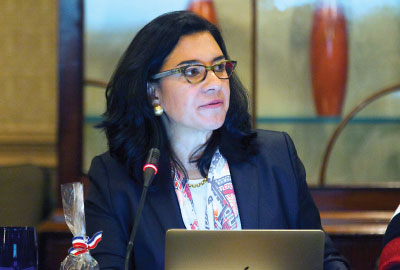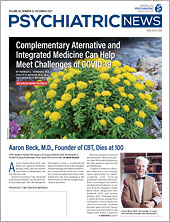Roughly half of people who have suicidal ideation will deny it if a health professional or researcher asks them about it, an analysis in General Hospital Psychiatry suggests.
“This is the opposite of what we want. Suicidal ideation is a potentially lethal symptom, but if we don’t know patients are having these thoughts, we can’t do anything to help them,” said Joseph H. Obegi, Psy.D., a clinical psychologist at the California Department of Corrections and Rehabilitation and author of the analysis.
Obegi reviewed data from 22 studies published between 2000 and 2021 that examined the prevalence of denial of suicidal thoughts among ideators in general, denial before suicide, and denial before and immediately after a suicide attempt. Not only did approximately 50% of people with suicidal thoughts deny having those thoughts, roughly 50% of people who had died by suicide, and 30% of people who had attempted suicide had denied having suicidal ideation in the week or month beforehand.
Furthermore, in many cases, people who had disclosed in apps and on paper that they had thoughts of suicide then denied that they had suicidal ideation when questioned directly in face-to-face assessments or interviews. For example, in one study, nearly 60% of those who reported their suicidal ideation on an app then denied their suicidal ideation in a telephone interview less than 24 hours later.
Obegi said that the findings suggest a disconnect between patients and health professionals when discussing suicidal ideation.
“If people are saying on paper that they have thoughts of suicide and then deny it when we talk to them, the problem is us,” he told Psychiatric News. “There is something going on in the interaction and how we are asking that is discouraging disclosure. That is a frightening thing to me.”
Obegi noted prior studies wherein researchers spoke with people who attempted suicide.
“[These patients] have many fears. They will tell you that they are afraid—afraid of being shamed, afraid of stigma, afraid that the clinician will imply they are weak or overreacting to get attention, afraid of being hospitalized,” Obegi said. “We need to take a hard look at how we respond to people who may be having thoughts of suicide and what they think of us and the mental health care system.”
Obegi said that health and mental health professionals may approach discussions of suicidality differently than they do other mental health conditions such as depression.
“When someone comes in and says they’re depressed, we’ll ask questions to try to formulate why, as the reasons why help determine the treatment,” Obegi explained. “That doesn’t happen with people who are suicidal. If they disclose suicidal thoughts, the tendency is to do a risk assessment.”
Going right to a risk assessment is missing an opportunity, Obegi said.
“As with depression, the only way you can offer meaningful treatment is to understand why the person is feeling that way,” he said. “The next question you ask should be, ‘What’s going on in your life that’s causing you so much pain that you want to die?’ ”
Suicide expert Maria A. Oquendo, M.D., Ph.D., the Ruth Meltzer Professor and Chair of Psychiatry at the Perelman School of Medicine at the University of Pennsylvania and past president of APA, said that while risk assessments are appropriate because suicide risk does need to be managed, building rapport with a patient is vitally important, and recognizing a patient’s pain is one step in the process. To that end, she recommends two tools that offer both assessment and intervention.
“The Safety Planning Intervention, during which the clinician takes the time to talk in detail about the precipitants and circumstances around the initiation or escalation of suicidal ideation, can assist in establishing rapport,” Oquendo said. “Collaborative Assessment and Management of Suicidality is another excellent way to engage patients who are at risk for suicide. Both strategies emphasize the process as a collaborative one. By using tools that can be followed up by collaborative interventions, we may maximize the likelihood of both identifying and mitigating risk.”
This study was not supported by any outside funding. ■
“How Common Is Recent Denial of Suicidal Ideation Among Ideators, Attempters, and Suicide Decedents? A Literature Review” is posted
here.
Information about the Safety Planning Intervention is posted
here.
Information about the Collaborative Assessment and Management of Suicidality is posted
here.


